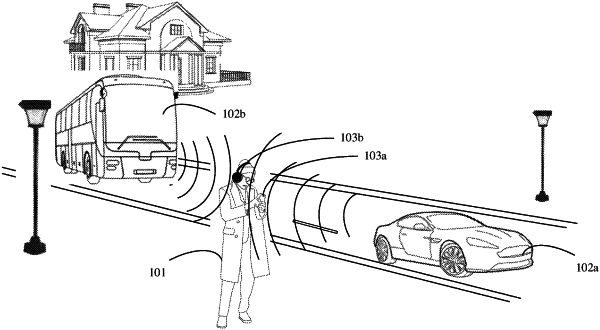| CPC G08B 31/00 (2013.01) [G06N 3/0442 (2023.01); G06N 3/0464 (2023.01); G08B 13/1627 (2013.01); G08B 21/02 (2013.01); G08G 1/005 (2013.01); G08G 1/166 (2013.01); G05B 2219/40563 (2013.01); G05B 2219/40577 (2013.01); G06F 18/214 (2023.01); G06N 3/04 (2013.01); G06N 3/08 (2013.01); G06V 20/52 (2022.01)] | 16 Claims |

|
1. A method of alerting threats to user of a mobile phone, comprising:
receiving, by the mobile phone associated with the user, a plurality of signals comprising at least one of Electro-Magnetic (E-M) signals and sound signals, from one or more sensors associated with the mobile phone, wherein the plurality signals are related to images and sound signals of an environment around the user;
detecting and classifying, by the mobile phone, one or more objects around the user by applying Convolution Neural Network (CNN) for the images and sound signals,
wherein (i) Long Short-Term Memory (LSTM) is used to determine the objects using sound signals, and
wherein (ii) Feature Pyramid Network (FPN) is used to identify the one or more objects by: generating image pyramids using bottom-up approach and top-down approach, and
wherein (a) in the bottom-up approach: the spatial resolution decreases whereas semantics of features increases, and (b) in the top-down approach: the spatial resolution increases whereas the semantics of the features decrease;
predicting, by the electronic gadget, a threat to the user caused by the one or more objects around the user based on at least one of, one or more rules and an Artificial Model (AI) model; and
generating, by the electronic gadget, one or more alerts based on the predicted threat posed by the one or more objects, wherein the one or more alerts are provided to the user to enable the user to avoid the threat.
|